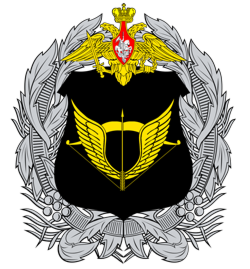canel.netlify.com
Get Selected For Special Forces Pdf

Getting Into SFAS. The first step to becoming a member of the Army Special Forces is to pass the Special Forces Assessment and Selection Course (SFAS). To get into this course, you must meet some basic physical fitness requirements by scoring a minimum of 206 on the Army physical fitness test for the 17-to-21 age group. Get selected for special forces Download get selected for special forces or read online here in PDF or EPUB. Please click button to get get selected for special forces book now.
Special Forces soldiers from 3rd Battalion, 10th Special Forces Group (Airborne), conduct shoot-house training at in September 2009. The Special Forces Qualification Course (SFQC) or, informally, the Q Course is the initial formal training program for entry into the. Phase I of the Q Course is Special Forces Assessment and Selection (SFAS). Getting 'Selected' at SFAS will enable a candidate to continue to the next of the four phases.
If a candidate successfully completes all phases he or she will graduate as a soldier and then, generally, be assigned to a 12-man Operational Detachment 'A' (ODA), commonly known as an 'A team.' The length of the Q Course changes depending on the applicant's primary job field within Special Forces and their assigned foreign language capability but will usually last between 56 and 95 weeks. Download free software smart designer x4.5 free. Contents • • • • • • • • • • • • • • • • • • • • • • • • • Special Forces Qualification Course [ ] Special Forces Preparation and Conditioning (SFPC) 2 Weeks 4 Days [ ] Scope: This 19-day performance-oriented course includes physical conditioning, map reading and land navigation instruction; land-navigation practical exercises and common-task training.
Course Description: To prepare and condition 18X and REP-63 (National Guard) soldiers to attend Special Forces Assessment and Selection course and the follow-on Special Forces Qualification Course. Special Forces Assessment and Selection (SFAS) [ ] A version of SFAS was first introduced as a selection mechanism in the mid-1980s by the Commanding General of the at the time, Brigadier General James Guest. Candidates in SFAS class 04-10 participate in logs drills in January 2010. There are now two ways for soldiers to volunteer to attend SFAS: • As an existing soldier in the US Army with the Enlisted rank of E-3 (Private First Class) or higher, and for Officers the rank of O-2 (1st Lieutenant) promotable to O-3 (Captain), or existing O-3s. • Initial Accession or IA, where an individual who has no prior military service or who has previously separated from military service first attends Infantry (OSUT, the combination of and ), Airborne School, and a preparation course to help prepare them for SFAS. This program is commonly referred to as the 'X-Ray Program', derived from '18X'.
The candidates in this program are known as 'X-Rays'. Both the Active Duty and National Guard components offer Special Forces Initial Accession programs.

The Active Duty program is referred to as the '18X Program' because of the Initial Entry Code that appears on the assignment orders. Training at SFAS [ ]. A Canadian soldier participates in a timed march alongside US Army soldiers during the Special Forces Qualification Course. In 2009 the began to once again accept some students from allied nations wishing to attend the school. The first phase of the Special Forces Qualification Course is Special Forces Assessment and Selection (SFAS), consisting of 24 days of training held at. Events in SFAS include numerous long distance courses. All land navigation courses are conducted day and night under heavy loads of equipment, in varied weather conditions, and in rough, hilly terrain.
Get Selected For Special Forces Pdf
Land navigation work is done individually with no assistance from instructors or fellow students and is always done on a time limit. Each land navigation course has its maximum time limit reduced as course moves along [ ] and are upwards of 12 miles (19 km) each. Instructors evaluate candidates by using obstacle course runs, team events including moving heavy loads such as telephone poles and old jeep trucks through sand as a 12-man team, the (APFT), a swim assessment, and numerous psychological exams such as IQ tests and the (DLAB) test. The final event, which was discontinued in early 2009 and reintroduced sometime before December 2013, is a road march of up to 32 miles (51 km) known as 'the Trek' or Long Range Individual Movement (LRIM). Selection outcomes: • Those who quit are Voluntarily Withdrawn (VW) by the course cadre and are generally designated NTR or Not-to-Return.